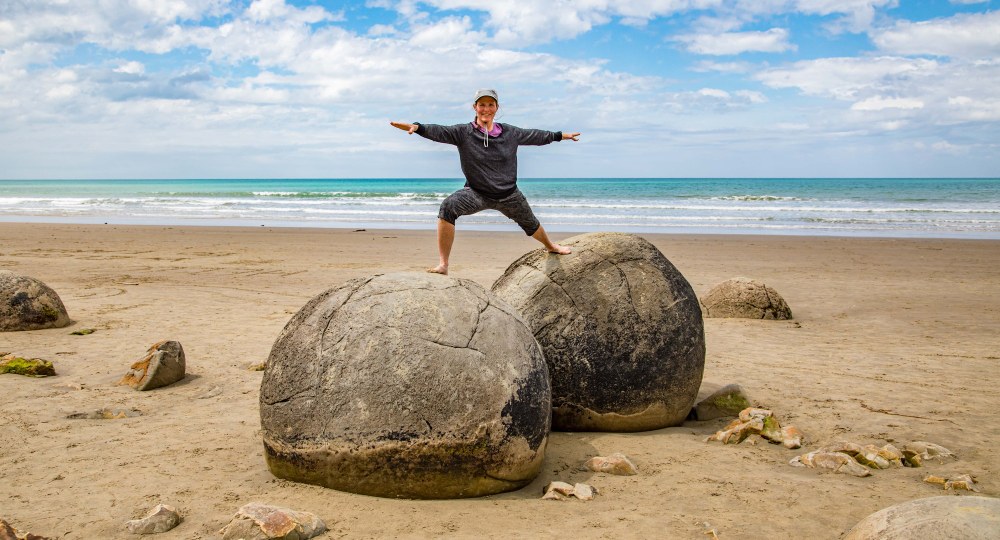
Mindfulness has become a popular practice in yoga and other therapies, but it also has its place in the mountains. To be “mindful” means paying complete attention to what’s going on, both inside your head and outside of yourself, and being fully present in the moment. If you are multi-tasking, you are likely not being mindful. Likewise, if you are rushing to get things done, or tag the summit and get back to the car, you probably don’t have a good chance of being mindful. The other component of mindfulness is accepting yourself exactly as you are, or treating yourself the way you would treat a good friend.
The next time you’re out in the wilderness, see if any of these mindfulness tips help bring you back to the present moment:
Experience your breath
One way to clear your mind and bring yourself back to the present is to focus on your breathing. Inhale for a count of three or four seconds and exhale for six to eight. Get curious about your breathing. Each breath is different. Some might be shaky and labored if you’re straining under a backpack; others might be deep and cleansing if you’ve stopped for a break. Where do you feel your breath in your body? How much of your lungs are you using? Can you fill them completely?
Pay close attention
Try taking a pair of binoculars or a mammal, bird, tree, or flower identification book with you and see if you can find something you’ve never seen before. What landmarks stand out to you? What can you learn about yourself and your personal preferences by what holds your attention? What are your partners experiencing? Can you tell by their gestures and facial expressions whether they’re doing okay? Are the clouds changing? Is the wind picking up? All of these details, both internal and external, can give you clues to what’s happening around you, and will help you better remember the experience.
Use every sense
We probably are most familiar with sight and sound when we travel. Stop for a few minutes and see how many sounds you can hear. Can you see all the colors of the rainbow around you? What about touch? Feel the spongy moss. Take off your shoes (weather permitting) and feel the earth under your bare feet. Rub your hand along the bark of different trees. How are the smells different when it’s rained recently, or if it’s been dry for a month? What scents do the flowers, bushes, and trees give off? Finally, berry picking can be satisfying on a hot day, not to mention great fun, but use caution with taste for obvious reasons. By combining use of all five senses (and that sixth, intuitive, or gut sense) we can make smarter decisions about our travel.
Develop a mantra
One of the benefits of exploring nature is coming back feeling cleansed and grounded, connected with something grander than ourselves. If you ever find that you are no longer paying attention to what’s around you, you might bring yourself back to the present by creating and repeating a short mantra that can remind you of your intention to stay present. An example might be: “May I be filled with curiosity. May I be well. May I appreciate everything around me. May I stay safe.” Personalize it to help you focus on what’s important to you.
Fill yourself with gratitude
As you hike, consider all those things, experiences, people, and moments you’re grateful for and what they can teach you. They can be as simple as a beautiful budding flower, or as complicated as a sloughing snow slope warning you of avalanche danger. It can be a word of encouragement someone gave you when you’re struggling, or the slobbery lick you got from the passing dog a minute ago. What did that moment mean to you? Try to feel in your body where that gratitude lands.
The next time you need to bring yourself back to the present, see if you can reconnect with your natural surroundings. Doing so can increase your enjoyment of your daily adventures as well as your overall safety and well-being in the mountains.
Main image of Courtenay Schurman practicing yoga on two of the Moeraki Boulders, South Island, New Zealand. Photo by Doug Schurman.
Courtenay Schurman is an NSCA-CSCS certified personal trainer, Precision Nutrition Level 2 Certified Nutrition Supercoach, and co-owner of Body Results. She specializes in training outdoor athletes. For more how-to exercises or health and wellness tips, visit her website at www.bodyresults.com or send a question to court@bodyresults.com.
This article originally appeared in our Spring 2020 issue of Mountaineer Magazine. To view the original article in magazine form and read more stories from our publication, visit our magazine archive.
 Courtenay Schurman
Courtenay Schurman